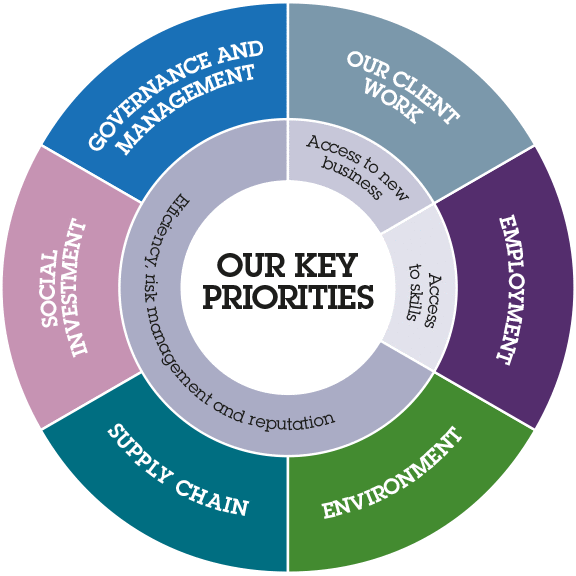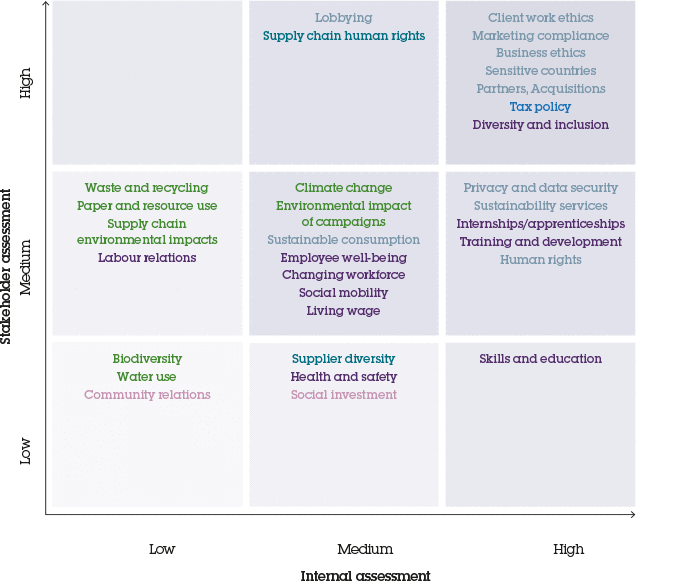We have identified six priority themes that are important for WPP and our stakeholders. The bullet points
indicate how issues in our reporting and on our materiality matrix relate to these themes. The inside
ring on the diagram indicates the main ways these themes relate to the three core elements of our business case
for sustainability.

Our client work
How we work with clients on
sustainability and the ethical
standards we adopt in our work
and behaviour, including:
- Sustainability services
- Sustainable consumption
- Business ethics and
anti-corruption
- Partners and associates
- Client work ethics
- Marketing compliance
- Human rights
- Acquisitions and sensitive
countries
- Public policy (including
public affairs advocacy,
lobbying and political
contributions)
- Privacy and data security
Employment
How we recruit, develop and support our people and invest in skills, including:
-
Diversity and inclusion
-
Training and development
-
Internships and
apprenticeships
-
Skills and education
- Employee well-being
Environment
How we are cutting our environmental footprint, including:
- Climate change
- Environmental impact of campaigns
- Paper and resource use
- Waste and recycling
Supply chain
How we are managing
standards in our supply
chain, including:
-
Supplier standards,
including human rights
Social investment
Our support for charities, including:
- Pro bono work
- Charity donations
- Volunteering
Governance and management
How we manage sustainability risks and opportunities, including:
-
Roles and responsibilities
for sustainability
-
Risk management
-
Stakeholder engagement
- Tax policy
Prioritising our material issues
In prioritising the issues of most importance to WPP, we look at our own business goals, activities and impacts, we monitor emerging issues and we seek the views of our stakeholders. Most of our stakeholder engagement is through the dialogue and discussion that takes place as part of normal business practice. However, we also regularly carry out a structured materiality process that incorporates both internal and external stakeholder feedback. Our formal materiality assessment last took place in December 2014. This process included interviews with clients, investors, NGOs and sustainable business experts and gathered views from senior executives in our Group functions and our
operating companies.
The assessment considered both positive and negative impacts and risks and opportunities for WPP. In the diagram below, importance to stakeholders is shown on the vertical axis, and materiality to WPP on the horizontal access. We use this assessment to help us prioritise issues in our reporting. All issues of high
importance are included in our report as well as the majority of issues of medium importance.
WPP materiality assessment

- Our client work
- Employment
- Environment
- Supply chain
- Social investment
- Governance and management